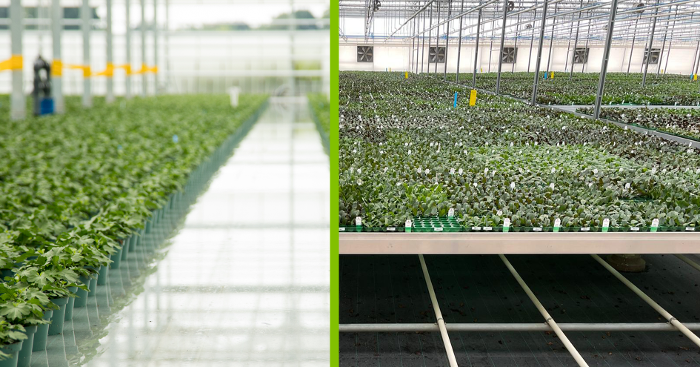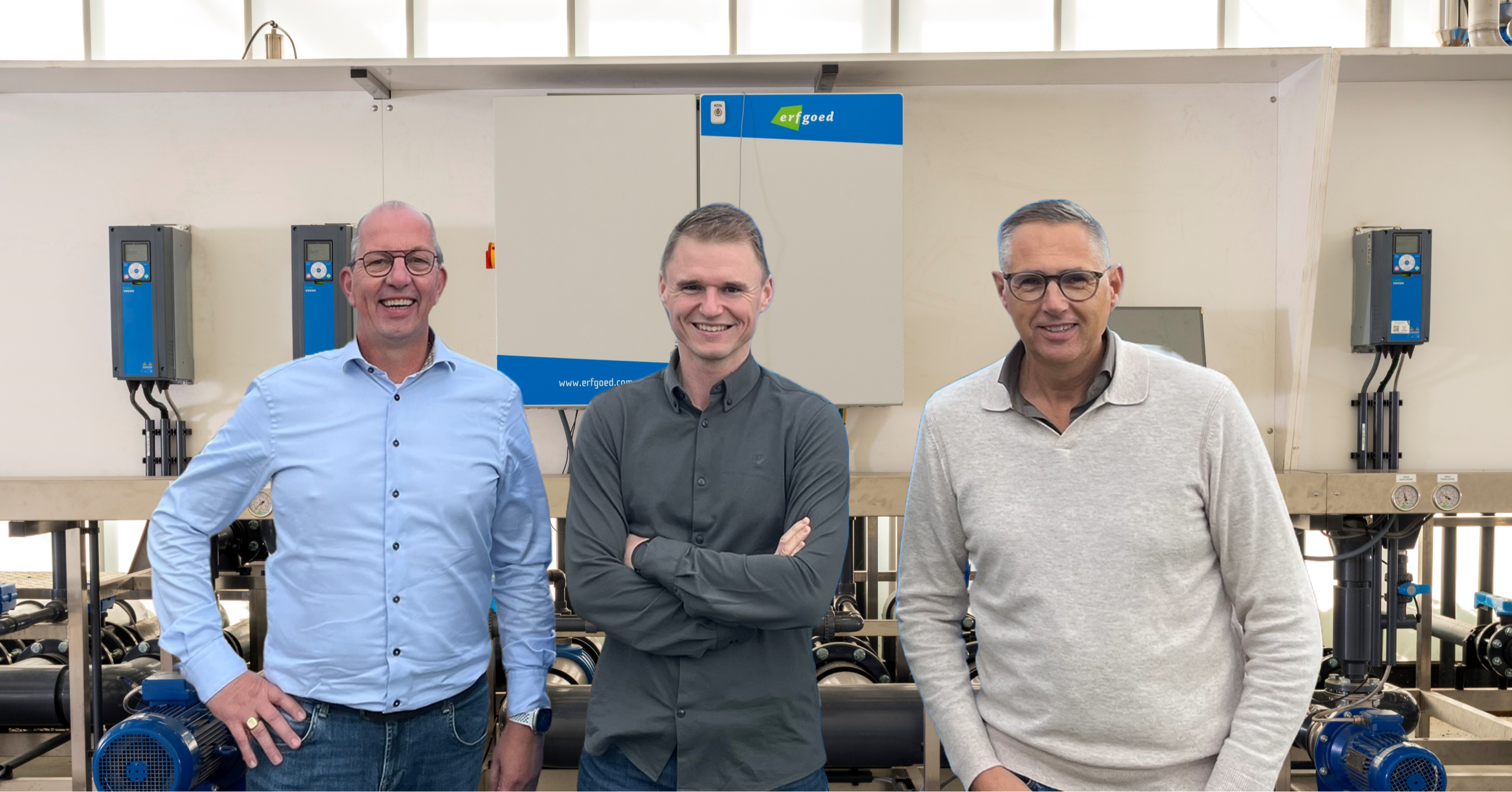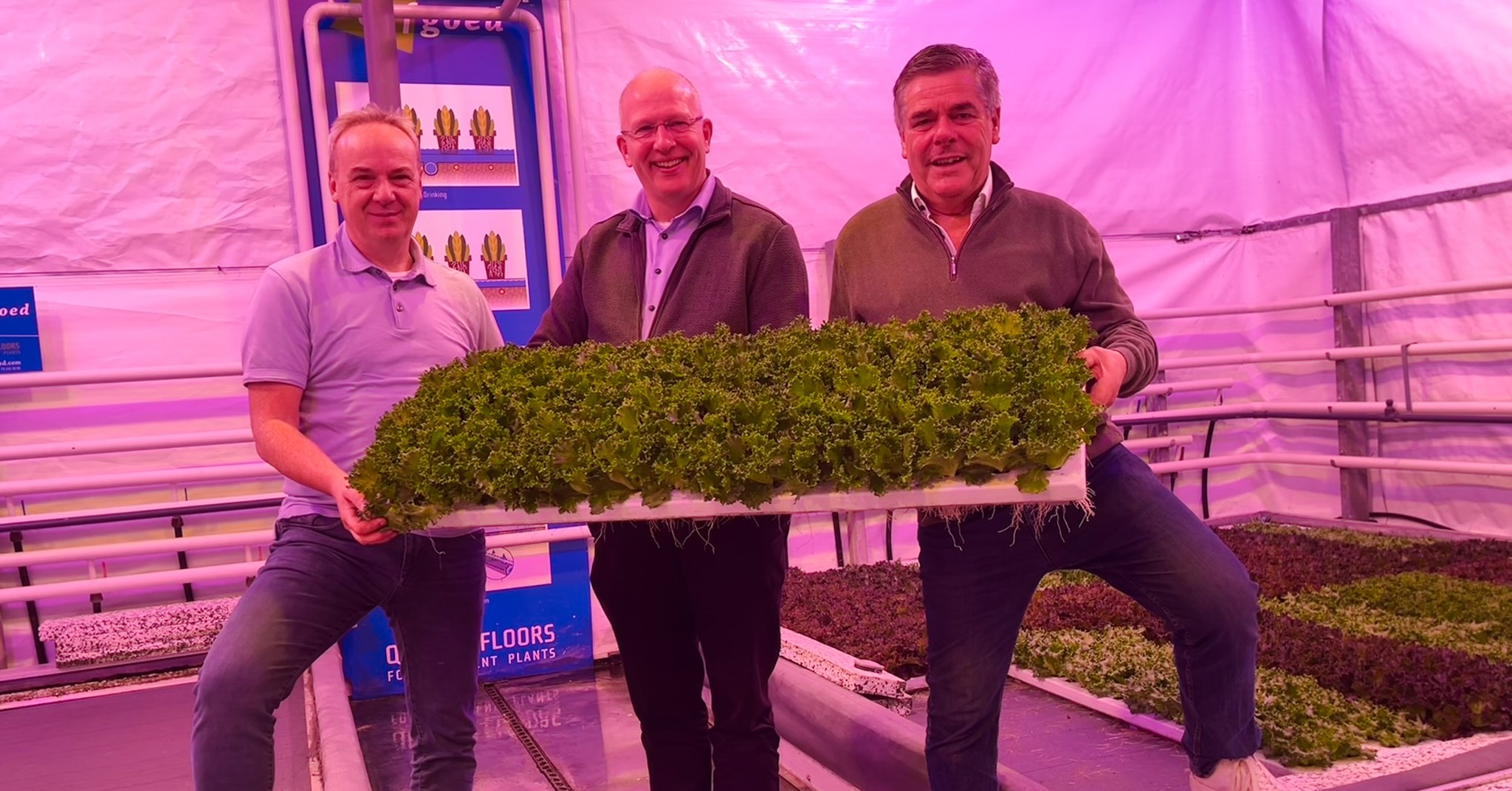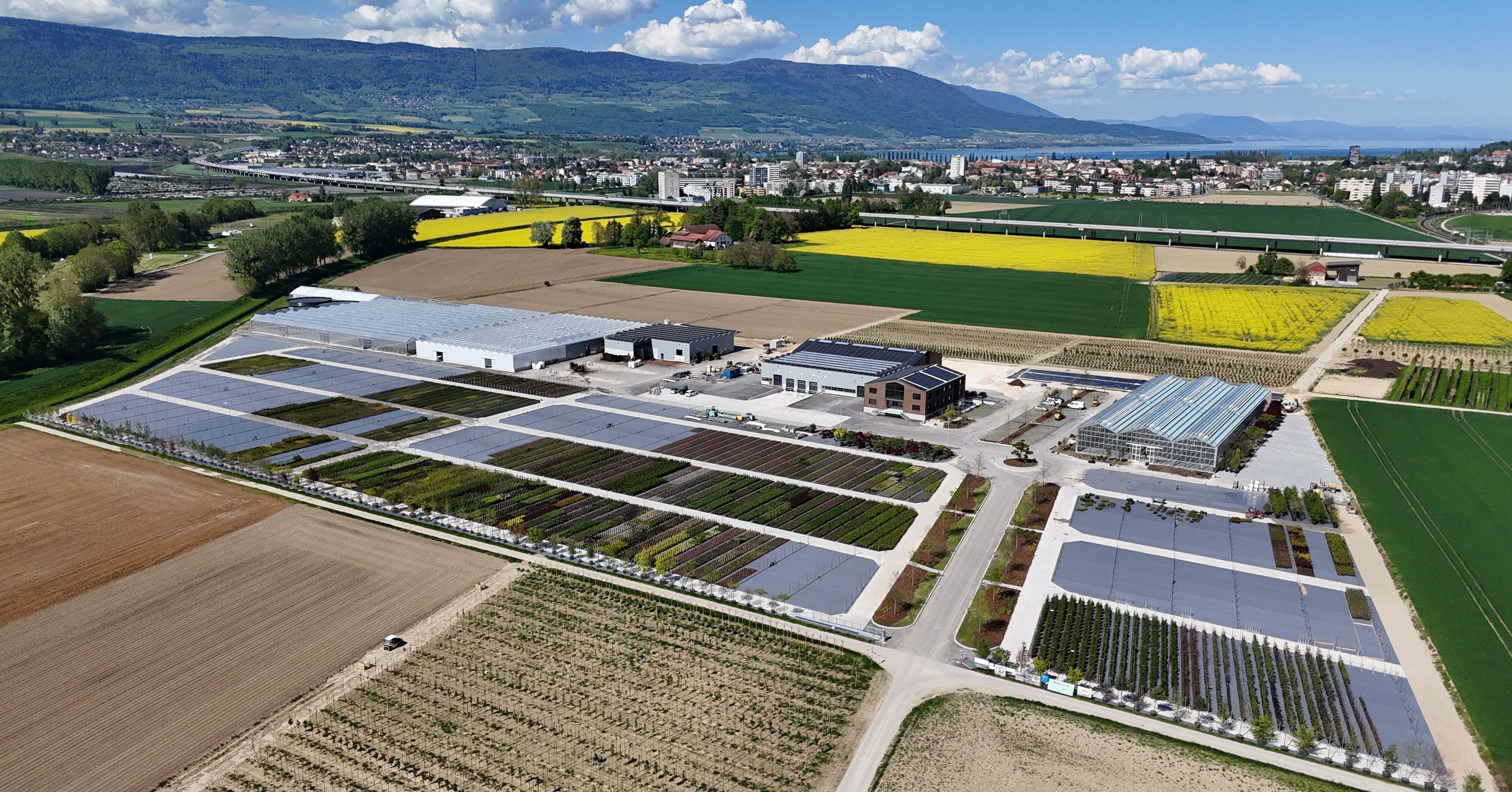- Prefer direct contact? +31 (0)79 593 38 00
- Language: English
Greenhouse flooring: Dutch Container Systems versus an ErfGoed Floor

Greenhouse flooring: Dutch Container Systems versus an ErfGoed Floor
Feb 16, 2023 11:04:39 AM
Choosing a new surface/floor for your greenhouse or outdoor field is not easy; numerous options exist. Our white paper "Ranking the greenhouse floor" describes 7 different surfaces. In this blog, we zoom in on the Dutch Container system and the ErfGoed Floor Excellent. We list the 7 main differences between the two surfaces:
- Influencing the microclimate;
- Automation;
- Investment;
- Working conditions;
- Sustainability;
- Space utilization;
- Energy consumption.
More questions about Greenhouse flooring? Check this page with all the answers.
1. Which greenhouse floor influences the microclimate the most?
In the Dutch Container System, plants take over the temperature of the environment. In some crops, this has a negative effect on growth. When plants are on the ground, the root temperature is more constant. In hot weather, you can put water in the ErfGoed Floor. That provides cooling and increases humidity. There can also be heating hoses in the floor, which heat when needed. You can read more about this in this blog.
Dutch Container flood systems are closed at the bottom. As a result, there is no "airflow" from underneath. With the ErfGoed Floor Excellent, there is some air movement through the gravel. Incidentally, ErfGoed is conducting field trials to provide more airflow from underneath to cool the plants and increase humidity or heat and stimulate evaporation.
Conclusion: The ErfGoed Floor offers more opportunities to influence or control the microclimate than a Dutch Container systems
2. Which greenhouse floor is easy for automatisation
Dutch Container systems offer plenty of opportunities for automation: the entire process can be computer-controlled. This saves time and labor costs.
The ErfGoed Floor Excellent also offers options for automation and optimization of internal logistics, only to a lesser extent. For example, you can work with conveyor belts, pneumatic tire forklifts, and spacing machines suitable for an ErfGoed Floor.
Conclusion: The mobile cultivation table offers more possibilities for automation than the ErfGoed Floor Excellent.
3. Which greenhouse floor has the best ROI?
Mobile cultivation tables require a substantial investment per square meter and are more expensive than other cultivation floors and systems. A system with movable cultivation tables is only profitable for pot plant cultivations with a high turnover rate or value. The ErfGoed Floor Excellent is less expensive, but the exact prices depend on the options you choose. On average, an ErfGoed Floor can have an ROI of within three to five years, and the cultivation floor lasts fifteen years+.
Conclusion: The ErfGoed Floor scores better on this point and requires a significantly lower investment than mobile cultivation tables.
4. Which greenhouse floor provide the best working conditions?
The most significant advantage of the Dutch Container system is that they can be moved within the nursery. For example, they can be taken to the head house so that employees do not have to perform crop operations in the hot greenhouse.
With the ErfGoed Floor Excellent, it is possible to take the plants to the barn, and conveyor belts can be used for this. In addition, you do not have to deal with puddles on the floor, which increases employees' ease and pleasure of work.
Conclusion: Both surfaces provide favorable working conditions, although the mobile grow table scores higher.
5. Which greenhouse floor is the most sustainable?
The subject of sustainability, in this case, relates to the production process of the required materials and the possibility of reusing materials. With the ErfGoed Floor Excellent, almost all materials can be reused. We wrote a fact sheet about this earlier.
The Dutch Container System can also be reused well, only the process of producing aluminum is less sustainable.
Conclusion: Both surfaces can be reused very well, but the production process of the Dutch Container system is less sustainable. As a result, the ErfGoed Floor scores just slightly higher on this point.
6. Which greenhouse floor creates the most space for the plants?
At first glance, a mobile cultivation table might seem to make optimum use of space. This surface also scores highly in this respect, but a lot of space is lost because of the aluminum edges. With the ErfGoed Floor, there is hardly any loss of space. Thin strips are used for the edges, which means that all the available space can be used optimally.
Conclusion: In terms of space utilization, the ErfGoed Floor scores better than the Dutch Container Systems.
7. Which greenhouse floor has the lowest energy consumption?
Because the ErfGoed Floor has better space utilization, energy is used more effectively. Another advantage is that with the ErfGoed Floor, the heat is brought directly to the plants. Because of this targeted heat input, less heat is lost.
Conclusion: The ErfGoed Floor has lower energy consumption and scores better on this point.
Other themes and more information
We also examined the aspects of the ebb and flow system, water reuse, whether there are puddles, flat floors, and flexibility. Here, the Dutch Container System and the ErfGoed Floor achieve similar scores. More information on the definitions and explanations can be found in the white paper: "Ranking the greenhouse floor".





